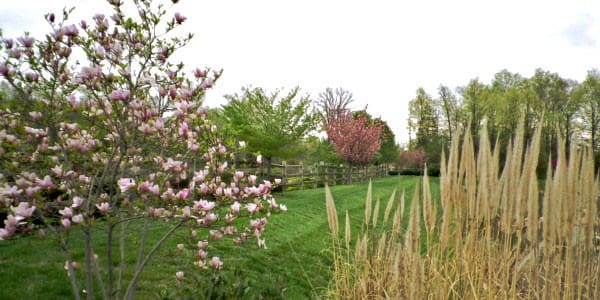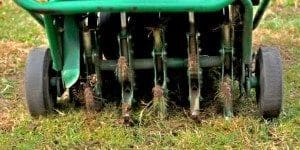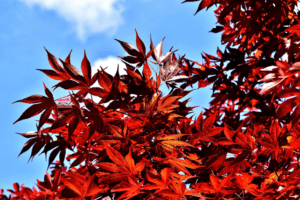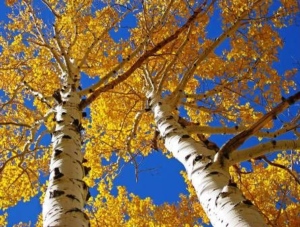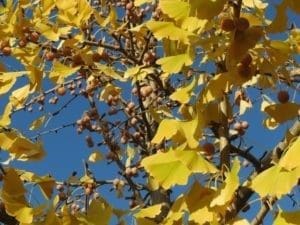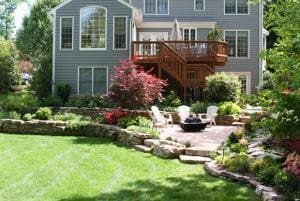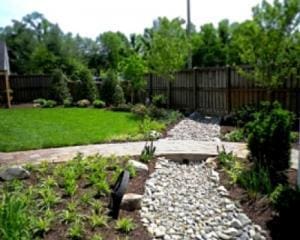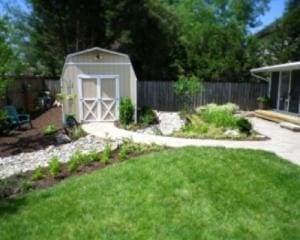
Winter in Northern Virginia can be brutal on your landscape. Between snow, ice, wind, and cold, it seems like you never know which plants will make it until next spring. With a little planning and preparation, though, it is possible to winter-proof your lawn, trees, shrubs, and other plants. All it takes is a little ingenuity – and some burlap. Follow these tips to prepare your landscape for winter:
1. Fertilize your lawn
Give your lawn one more mineral boost so that it has all the nutrients it needs during the cold winter months.
2. Cut your lawn one last time
There’s a lot of debate on how short you should cut your grass for the winter. In Virginia, anywhere from two to three inches should be short enough to avoid issues with snow mold, but it’s best to ask a professional what works best for your turf type.
3. Remove debris from your yard
No one wants to run over a stick or other debris while sledding! It’s also good to get rid of sticks and branches now so that they don’t deteriorate and turn into tiny bits of shrapnel when you run the mower over them next spring.
4. Prevent animals from snacking on your plants
The lack of growth in the fall sends animals like deer and rabbits on a rampage through your garden. Cover young tree trunks with hardware cloth or fencing with very small openings to prevent nibbling. If animals have decided to snack on other plants, you can either cover them with mesh or garden fabric, or you can try an animal repellent spray. If deer are a problem, Sunrise Landscape and Design is trained in the proper use and application of DeerPro, the only deer repellent that is approved by the EPA.
5. Prep trees for the weight of snow
Hire a professional to prune dead or broken branches from your trees; they will know what pruning works best for different tree species. Also, you can ask the professional whether or not any trees need bracing or cabling to make it through the winter.
6. Water plants, especially evergreens
Continue watering your plants until the first freeze. After that, try to water your young and broad-leaf evergreens at least once every couple of weeks throughout the winter if it’s dry.
7. Fertilize trees after the first hard frost
Once the first big freeze has made your trees dormant, fertilize them so that they are ready for growth when spring comes around.
8. Consider spraying evergreens with an anti-desiccant spray
Anti-desiccant sprays are often used on broad-leaf evergreens like holly, rhododendrons, and boxwood, to slow water loss and prevent winter burn. Make sure to read directions and avoid contact with narrow-needled evergreens, however, because anti-desiccants can poison them.
9. Spread extra mulch for insulation
For perennials that need extra protection, spread an additional layer of mulch two to four inches thick in November.
10. Wrap shrubs in burlap
Burlap also can serve as an excellent wind barrier for evergreens.
11. Protect fragile plants
If plants are extra vulnerable, create a teepee out of bamboo sticks and burlap to shield them from snow and harsh winter wind. Burlap is great because it blocks the wind, but is breathable. Wrap the trunks of thin-barked trees, like maple and cherry, with cardboard tree wrap or plastic to avoid frost cracks. Lastly, for some extra stability, try tying together branches of trees that are prone to splitting (like arborvitae and boxwood) with hosiery or another soft fabric.
12. Move some plants indoors
When in doubt, bring it indoors – or at least into the garage. Most perennials that hang out in planters during warmer months need a little extra protection from the elements.
13. Plan your snow piles
Make sure you won’t be piling snow on top of delicate plants. If you can, spread snow out after shoveling to avoid compaction in certain areas of your lawn.
14. Consult a professional about salt and deicing agents
Whatever you plan to use on your driveway and pathways will inevitably end up in your yard – and may end up poisoning your plants. Try to use calcium chloride, potassium chloride, or calcium magnesium acetate if you must use a melting agent. If not, try sand or cinders.
15. Refrain from shaking snow and ice off branches
Once the snow has landed, the damage is done. Don’t shake frozen limbs because they are brittle and prone to breaking. Allow the snow and ice to melt naturally.
Ice, wind, and snow can do plenty of damage to your landscape during the winter. It may sound like a lot of work, but a few hours spent preparing your landscape for winter may prevent days worth of replanting in the spring. If you need some help prepping your Northern Virginia Landscape, contact Sunrise today. We will make sure that all your hard work this fall is rewarded when spring rolls around.
Sunrise Landscape and Design is Northern Virginia’s premier landscaping company offering a full range of landscaping services. Our landscape and design services include hardscapes, landscape lighting, irrigation, and water features. Our property maintenance services will keep your landscape vibrant year-round with mulching, lawn mowing, tree pruning, garden cleanups, edging, and mosquito/deer control.




